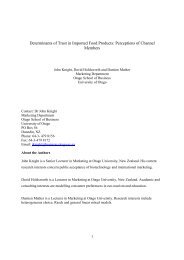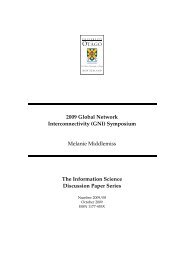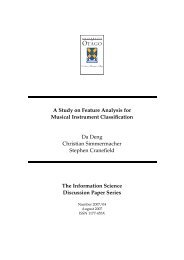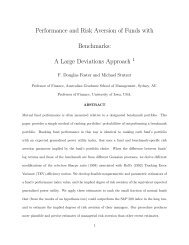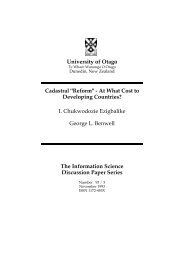Where is R2P grounded in international law? Anne-Marie Judson A ...
Where is R2P grounded in international law? Anne-Marie Judson A ...
Where is R2P grounded in international law? Anne-Marie Judson A ...
You also want an ePaper? Increase the reach of your titles
YUMPU automatically turns print PDFs into web optimized ePapers that Google loves.
done or are carried out <strong>in</strong> execution of or <strong>in</strong> conformity with any crime aga<strong>in</strong>st peace,<br />
or any war crime. The affirmation conclud<strong>in</strong>g the pr<strong>in</strong>ciples which declares<br />
“complicity <strong>in</strong> the comm<strong>is</strong>sion of a crime aga<strong>in</strong>st peace, a war crime or a crime<br />
aga<strong>in</strong>st humanity <strong>is</strong> a crime under <strong>in</strong>ternational <strong>law</strong>” <strong>is</strong> also considered customary<br />
<strong>in</strong>ternational <strong>law</strong>. 195<br />
Certa<strong>in</strong> Conventions are considered customary <strong>in</strong>clud<strong>in</strong>g the Convention on the nonapplicability<br />
of statutory limitations to War crimes and Crimes aga<strong>in</strong>st humanity<br />
(1968) and the European Convention on the non-applicability of statutory limitations<br />
to Crimes aga<strong>in</strong>st Humanity and War crimes (1974). Both recognize that war crimes<br />
and crimes aga<strong>in</strong>st humanity are grave crimes <strong>in</strong> <strong>in</strong>ternational <strong>law</strong> and stipulate that<br />
no statutory limitations shall apply to war crimes as described <strong>in</strong> the Nuremberg<br />
Tribunal (1945) or the Geneva Conventions (1949) nor to crimes aga<strong>in</strong>st humanity<br />
committed <strong>in</strong> times of war or <strong>in</strong> times of peace, even when these crimes do not<br />
constitute a violation of the domestic <strong>law</strong> of the country <strong>in</strong> which they were<br />
committed. 196<br />
The Convention for the Protection of Cultural Property <strong>in</strong> the event of Armed Conflict and protocols<br />
(1954), The Hague Conventions (1907) on the rules and customs of war and the Geneva<br />
Conventions (1949) For Amelioration of the Condition of the Wounded and Sick <strong>in</strong><br />
Armed Forces <strong>in</strong> the Field (1949) and the Relative Treatment of Pr<strong>is</strong>oners of War<br />
(1949) as well as the Protection of Civilian Persons <strong>in</strong> a Time of War (1949 and their<br />
additional protocols (1977) relat<strong>in</strong>g to the Victims of Non-<strong>in</strong>ternational Armed<br />
Conflict, are all considered customary <strong>in</strong>ternational <strong>law</strong>. The Convention on the Prevention<br />
and Pun<strong>is</strong>hment of the Crime of Genocide (1948) <strong>is</strong> also considered customary even though<br />
there are only 141 parties signatory to the Convention.<br />
Lastly the United Nations Charter and the Statute of the International Court of<br />
Justice are both considered customary <strong>in</strong>ternational <strong>law</strong>. In relation to state practice<br />
some Conventions and Treaties with a high percentage of signatory states could also<br />
be considered as customary <strong>law</strong>, <strong>in</strong>clud<strong>in</strong>g the Convention on the Rights of a Child with 193<br />
state signatory parties or the Convention on the Elim<strong>in</strong>ation of All Forms of D<strong>is</strong>crim<strong>in</strong>ation<br />
195 Pr<strong>in</strong>ciple vii, see also the United Nations General Assembly, Resolution 95 (1), (1946) <br />
196 See Convention on the Non-‐applicability of Statutory Limitations to War crimes and Crimes <br />
aga<strong>in</strong>st humanity (1968) <br />
<br />
65




